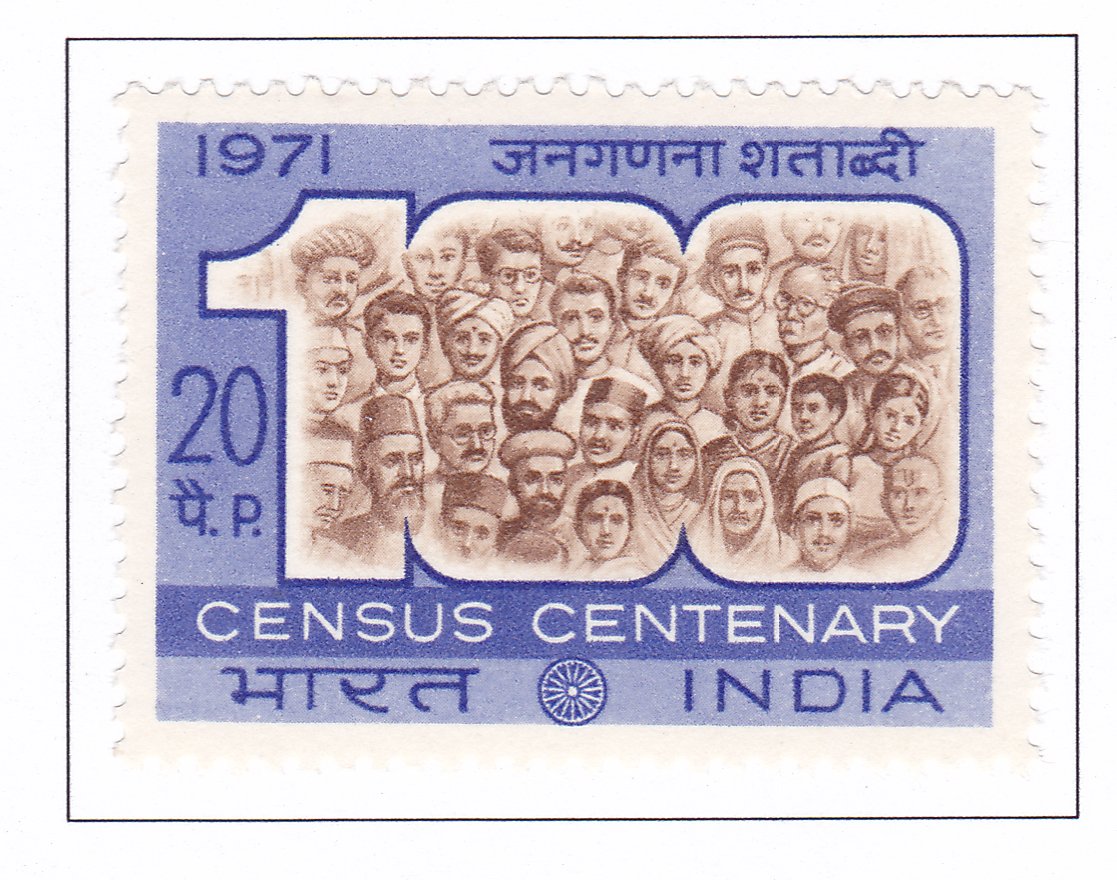Census Centenary

Technical Data
| Date of Issue | March 10, 1971 |
|---|---|
| Denomination | 20 nP |
| Quantity | 3,000,000 |
| Perforation | comb 13 |
| Printer | Security Printing Press, Nashik |
| Watermark | No Watermark |
| Colors | Blue | Brown |
| Catalog Codes |
Michel IN 522 Stamp Number IN 538 Yvert et Tellier IN 317 Stanley Gibbons IN 636 |
| Themes | Anniversaries and Jubilees | Census of Population |
The completion of a hundred years of regular decennial census taking in India in 1971 marked a significant milestone in the nation’s demographic history. The census, which commenced on the 10th of March, 1971, symbolized the collective effort of millions of honorary workers trained and engaged in enumeration duties across the country. With India accounting for more than one-seventh of the world’s population, the census assumed particular importance on the global stage.
Since the first comprehensive population census in 1871-72, India had established a rich tradition of conducting decennial enumerations, despite the vastness of its territory, the immense size of its population, and various political upheavals, including world wars. The census operation involved close cooperation between the Central and State Governments, local bodies, and the people, reflecting a shared commitment to the success of this national endeavor.
The concept of population statistics as a measure of state policy dates back to ancient times, as evidenced by its mention in Kautilya’s ‘Arthashastra.’ The term ‘census’ itself has Roman origins, referring to the registration of population for taxation and military conscription purposes.
In modern times, censuses became indispensable for electoral demarcation, scientific planning, administration, and social welfare programs. The first Indian Census, conducted in 1871, laid the foundation for subsequent decennial enumerations, despite being non-synchronous.
Since independence and the beginning of the planning era, census operations in India evolved to meet the growing demand for population statistics. Efforts were made to introduce sophisticated techniques for data collection and processing, including the use of electronic computers, to produce accurate and timely results.
The Indian Census not only counted heads but also collected demographic, social, cultural, and economic characteristics of individuals, presenting them in meaningful tables for data users. It also gathered data on housing and establishments and produced analytical reports and ancillary studies to enrich census statistics.
The commemorative postage stamp issued by the Posts and Telegraphs Department in honor of the 1971 census pays tribute to the vast army of enumerators and the people of India whose cooperation was indispensable for the successful completion of this national undertaking.
